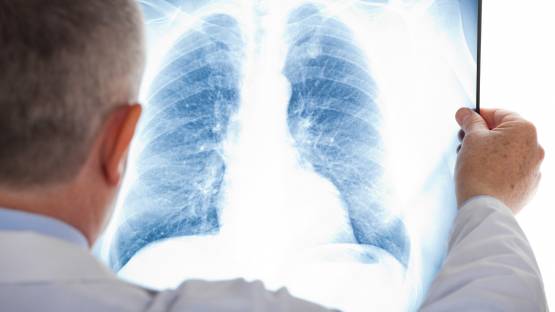Lung cancer is the number one cancer killer across the globe. Medical imaging and nuclear medicine are pivotal for early diagnosis and treatment, a new study co-authored by the IAEA and published recently in the Journal of Clinical Oncology (JCO) found.
The IAEA, in cooperation with global experts from seven influential cancer care organizations, developed the paper calling for improvements in global medical imaging and nuclear medicine infrastructure to improve outcomes equally for all lung cancer patients throughout the world and close the gap in lung cancer patient care.
The IAEA Medical Imaging and Nuclear Medicine Global Resources Database, IMAGINE, reports stark inequities in relevant diagnostic capacities of countries. For example, one computed tomography (CT) scanner serves an average of 25 000 people in high-income countries compared with 1.7 million people in low-income countries. Furthermore, diagnosis must be matched with availability of treatments once a cancer is diagnosed. Cancer treatment services, overall, are available in more than 90 per cent of high-income countries but in fewer than 30 per cent of low-income countries.
Medical imaging, radiology and nuclear medicine play an indispensable role in the management of lung cancer. Medical imaging refers to several different technologies that are used to study the human body for the purpose of diagnosing, monitoring or treating medical conditions. Nuclear medicine involves the administration into the body of small and safe amounts of radiopharmaceuticals, used for diagnosis and, for some patients, treatment.
By bringing together data and research covering the entire global lung cancer landscape, the study presents gaps in both diagnostics and therapies worldwide. It shows that a shift to diagnosing lung cancer at earlier stages is central to appropriate lung cancer patient management and can lead to life-prolonging interventions and life-enhancing palliative measures.
“Early-stage lung cancer can be treated, but most patients, especially in low- and middle-income countries where there is a lack of access to both diagnostics and therapies, only come for diagnosis when they are already in advanced stages,” said Miriam Mikhail, a Diagnostic Radiologist at the IAEA and one of the authors of the article. In global public health strategies for lung cancer, the focus has been upon removing known causes; for example, tobacco, radon and asbestos. Mikhail said that a concurrent emphasis on early diagnosis could lead to life-prolonging interventions and life-enhancing palliative measures, including impactful low-dose CT screening of those at high-risk of developing lung cancer.
“Improved population-based outcomes are attainable,” she said. “With this paper, we hope to galvanize high-level strategic dialogues on how medical imaging infrastructure improvement is a key puzzle piece to fight lung cancer.”
Lung cancer, alone, represents 11.6 per cent of new cancers and 18.4 per cent of cancer deaths globally. Noting the humanitarian effect of lung cancer, with people dying prematurely and suffering disproportionately, as well as the socioeconomic impact of this – especially in low- and middle-income countries where early detection and treatment are often limited – the authors sought to synthesize how global research has proven that appropriate treatment selection guided by appropriate imaging ultimately leads to measurably better results for patients and the country, in the mid and long term.
IAEA experts worked with counterparts from the Abramson Cancer Center of the University of Pennsylvania, the University Hospital Zurich, the European Society for Medical Oncology, the European Association of Nuclear Medicine, the Tata Memorial Centre, the Memorial Sloan Kettering Cancer Center and the MD Anderson Cancer Center to develop the study.





